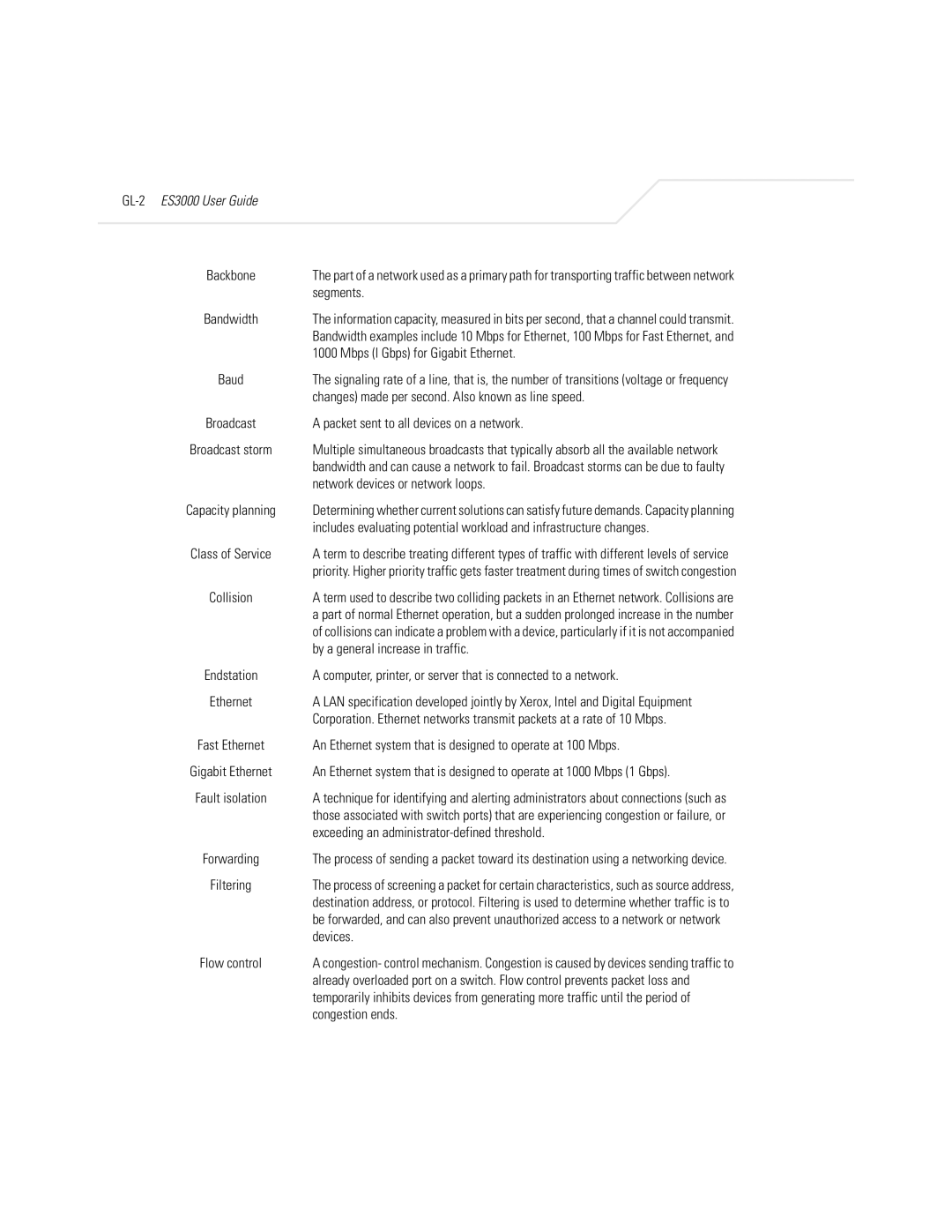GL-2 ES3000 User Guide
Backbone | The part of a network used as a primary path for transporting traffic between network |
| segments. |
Bandwidth | The information capacity, measured in bits per second, that a channel could transmit. |
| Bandwidth examples include 10 Mbps for Ethernet, 100 Mbps for Fast Ethernet, and |
| 1000 Mbps (I Gbps) for Gigabit Ethernet. |
Baud | The signaling rate of a line, that is, the number of transitions (voltage or frequency |
| changes) made per second. Also known as line speed. |
Broadcast | A packet sent to all devices on a network. |
Broadcast storm | Multiple simultaneous broadcasts that typically absorb all the available network |
| bandwidth and can cause a network to fail. Broadcast storms can be due to faulty |
| network devices or network loops. |
Capacity planning | Determining whether current solutions can satisfy future demands. Capacity planning |
| includes evaluating potential workload and infrastructure changes. |
Class of Service | A term to describe treating different types of traffic with different levels of service |
| priority. Higher priority traffic gets faster treatment during times of switch congestion |
Collision | A term used to describe two colliding packets in an Ethernet network. Collisions are |
| a part of normal Ethernet operation, but a sudden prolonged increase in the number |
| of collisions can indicate a problem with a device, particularly if it is not accompanied |
| by a general increase in traffic. |
Endstation | A computer, printer, or server that is connected to a network. |
Ethernet | A LAN specification developed jointly by Xerox, Intel and Digital Equipment |
| Corporation. Ethernet networks transmit packets at a rate of 10 Mbps. |
Fast Ethernet | An Ethernet system that is designed to operate at 100 Mbps. |
Gigabit Ethernet | An Ethernet system that is designed to operate at 1000 Mbps (1 Gbps). |
Fault isolation | A technique for identifying and alerting administrators about connections (such as |
| those associated with switch ports) that are experiencing congestion or failure, or |
| exceeding an |
Forwarding | The process of sending a packet toward its destination using a networking device. |
Filtering | The process of screening a packet for certain characteristics, such as source address, |
| destination address, or protocol. Filtering is used to determine whether traffic is to |
| be forwarded, and can also prevent unauthorized access to a network or network |
| devices. |
Flow control | A congestion- control mechanism. Congestion is caused by devices sending traffic to |
| already overloaded port on a switch. Flow control prevents packet loss and |
| temporarily inhibits devices from generating more traffic until the period of |
| congestion ends. |
